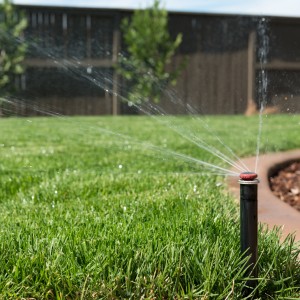 Home irrigation systems, or lawn sprinkler systems, are becoming increasingly popular, and they are especially prevalent in dry climates that do not see ample rain for keeping a lawn green. Here is a look at how they work, from mechanics to installation to everyday use.
Home irrigation systems, or lawn sprinkler systems, are becoming increasingly popular, and they are especially prevalent in dry climates that do not see ample rain for keeping a lawn green. Here is a look at how they work, from mechanics to installation to everyday use.
Mechanics
In most neighborhoods, water is supplied to homes by means of a large capacity city water main. From this large capacity city water main to your home runs a smaller capacity supply line. In order to install an irrigation system on your property, a there must be an additional connection in this smaller supply line for supplying water to the irrigation system. There is a system shut-off valve at the beginning of this connection so that the homeowner can turn off water supply to the irrigation system without affecting the water supply going into the home. Beyond this system shut-off valve there is a backflow prevention device; this keeps water from flowing back into your home’s main supply line and therefore helps prevent accidental contamination of your home’s water supply. Beyond this backflow prevention device is a sprinkler system valve, which holds the water under pressure behind it until it receives a low voltage electrical current. Upon receiving this electrical current from the irrigation controller, the valve opens and allows water to flow through to the sprinkler heads.
Installation
Installation of a home irrigation system is best performed by an irrigation system professional. Before any cutting into your home supply line, it is important to first check local codes for any requirements and to have your local utilities mark the location of all buried gas lines, pipes, and cables. An irrigation system professional will then mark with flags and/or spray paint where the sprinklers will be installed and where trenches will be dug for installing the irrigation system lines. A professional will typically use a trenching machine to dig trenches into your property and to reach your home’s water supply line. Then, he or she will lay out the pipe and fittings and add a connection somewhere in the supply line that leads from the water meter to your home. After this step, the professional will continue by installing the system shut-off valve, backflow prevention device, and sprinkler system valve, along with all needed pipes and fittings. The irrigation system professional will also need to install the electrical connection leading to the sprinkler system valve, the controller, and sprinkler heads throughout the system. The professional will finish by flushing the system, filling the trenches, and placing the valve cover.
Everyday Use
An irrigation system is easy to use thanks to the irrigation timer that controls it. With it, you can turn your system on and off and program it to engage at particular times of the day. You can even have a rain sensor installed in your system to temporarily shut off your system whenever wet weather hits.